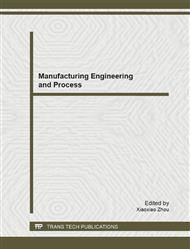p.15
p.20
p.26
p.31
p.39
p.47
p.52
p.57
p.61
A High-Gradient Magnetic Separation System for Separating Magnetic Nanobeads from Aqueous Solution
Abstract:
Magnetic separation is an emerging and promising technology in biological sample preparation. In this paper, a high-intensity and high-gradient magnetic separation system was developed to separate magnetic nanobeads from aqueous solution. This system mainly consisted of a magnetic separator, a micropump and an electronic timer. The magnetic separator was designed by placing two columns of permanent magnets in an aluminum holder. Two magnets in each column were laid out in repelling mode and a hole between the two columns was used to accommodate a 1.5 ml tube. Working with the electronic timer, the micropump was employed to remove waste solution at a certain rate after magnetic nanobeads captured onto the sides of the tube wall. The experiments for separation of magnetic nanobeads with diameters of 150 nm and 50 nm using the developed magnetic separation system were conducted to optimize the key parameters of the system including nanobeads concentration, separation time and flow rate. The separation efficiencies of magnetic nanobeads increased as the nanobeads concentration and the separation time increased, whereas decreased when the flow rate was increased. Experimental results proved that the proposed magnetic separation system was able to separate magnetic nanobeads (diameters of 150 nm and 50 nm) with separation efficiencies of 99% and 90% in 30 min and 150 min respectively.
Info:
Periodical:
Pages:
39-43
Citation:
Online since:
April 2012
Authors:
Price:
Сopyright:
© 2012 Trans Tech Publications Ltd. All Rights Reserved
Share:
Citation:


